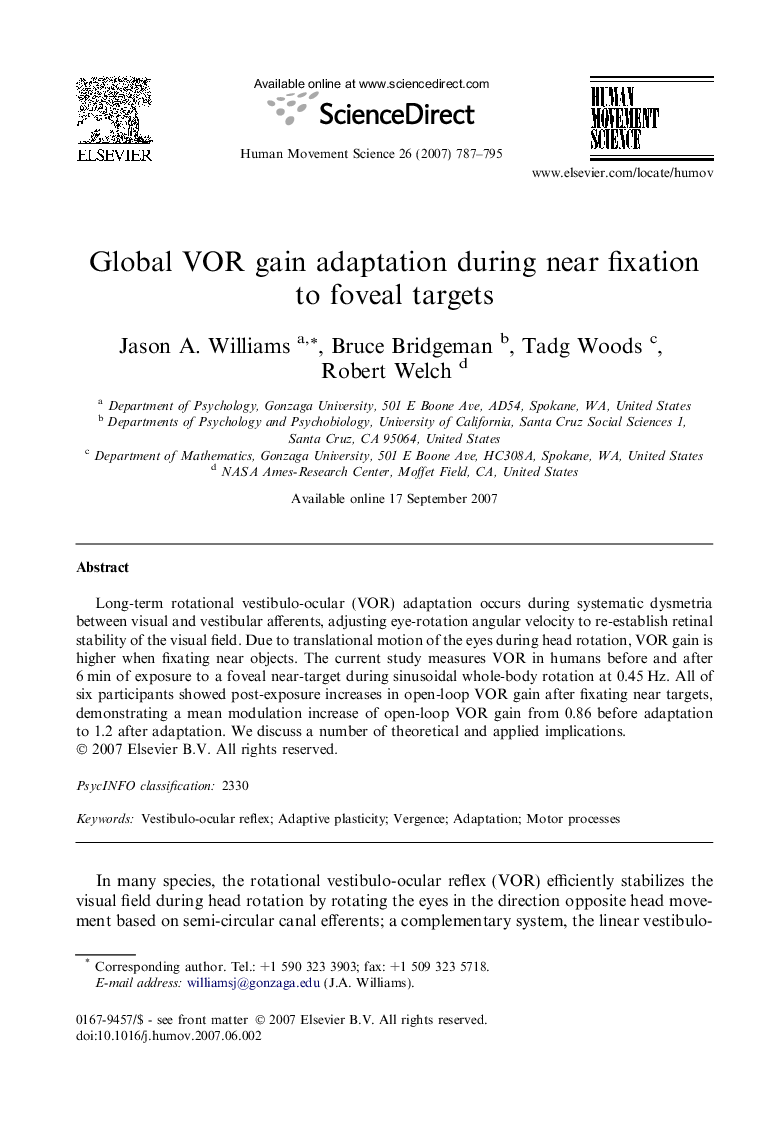| Article ID | Journal | Published Year | Pages | File Type |
|---|---|---|---|---|
| 928811 | Human Movement Science | 2007 | 9 Pages |
Long-term rotational vestibulo-ocular (VOR) adaptation occurs during systematic dysmetria between visual and vestibular afferents, adjusting eye-rotation angular velocity to re-establish retinal stability of the visual field. Due to translational motion of the eyes during head rotation, VOR gain is higher when fixating near objects. The current study measures VOR in humans before and after 6 min of exposure to a foveal near-target during sinusoidal whole-body rotation at 0.45 Hz. All of six participants showed post-exposure increases in open-loop VOR gain after fixating near targets, demonstrating a mean modulation increase of open-loop VOR gain from 0.86 before adaptation to 1.2 after adaptation. We discuss a number of theoretical and applied implications.
